A couple of years ago, Ronald (SolarQuotes’ Fact Checker) asked me for advice on buying a commuter push bike. I told him:
“Whatever you do, don’t buy a bike from K-Mart!”.
The next week, I walked into the office and saw a K-Mart bike leaning against the wall. It died on its maiden trip from Ronald’s house. The bottom bracket was toast, the gears were mangled, and the thing wouldn’t pedal.
When I pulled it apart at home, I was surprised. The hardtail frame itself wasn’t bad – good welds, decent geometry. But the components? Mostly junk. I replaced the worst of it with spares from my garage, bought a proper bottom bracket, headset and brakes. The components were worth about $600 on top of the $150 bike. The result: a solid commuter that rides well and should last for years.
The lesson stuck with me: with the right parts, fitted properly, even a K-Mart bike frame can turn into reliable transport. Manufacturing technology is so mature, even dirt-cheap bike frames can be reasonable quality these days.
The Same Applies For Solar
Solar’s at that stage. Most panels and inverters on the CEC list are fine. The frame is solid. But the difference between a solar power system that saves you money for decades and one that drives you mad comes down to design, installation, configuration and support.
There are some dirt-cheap Chinese brands that are actually OK. I’ve seen them run reliably when installed, configured and supported by the right people. Some good installers I know use them without drama. But you won’t see those brands on our Trusted Brands chart – for two reasons:
- They’re the calling card of bottom-feeder solar retailers. The cheap-and-nasty end of the industry loves these brands, so if you’re not careful you’ll end up with OK hardware butchered by a bad design and install.
- Their Australian support is patchy at best. If your installer has your back, that’s fine. But if you are with a bottom-end retailer that doesn’t do customer support, you’re left trying to get the manufacturer to help you, and without industry connections, you’re in for a world of pain.
The ‘Rate My Quote’ Circus
Which brings me to the circus on the giant My Efficient Electric Home Facebook group. This community has provided a lot of value over the years, but these days is dominated by ‘Rate My Quote’ posts. Post a screenshot and wait for the mob to decide if that’s too much (or too little) money for the brand being offered.
This kind of quote shaming is poison. It reduces a complex system – design, installation, commissioning, long-term support – down to two things: the logo on the hardware and the price at the bottom. It makes good installers look like rip-off merchants, while encouraging a race to the bottom that leaves consumers stranded when things go wrong.
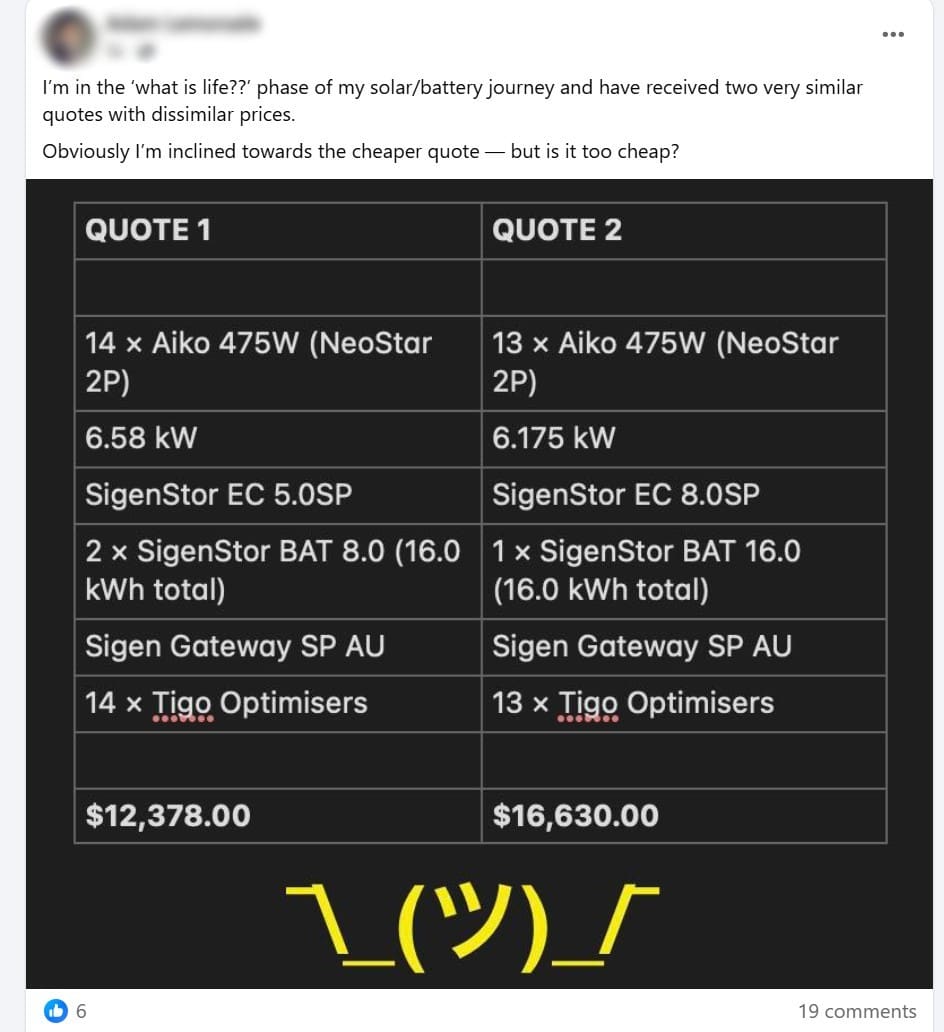
One example of the recent barrage of social media posts asking for a public verdict on a solar/battery quote.
A Quote Doesn’t Just Cover The Hardware + Install
The truth is you’re not buying panels, an inverter and a battery. You’re buying decades of lower bills – and maybe blackout protection. That only happens when someone designs, installs, configures and supports the system properly.
Want proof? Look at SolarQuotes’ top-rated installers. They’re often fitting solid mid-range gear and backing it with service that lasts. Their five-star reviews aren’t just from shiny new installs either – plenty are from customers who had their systems installed half a decade ago and are still impressed, because their installer is still taking their calls, or even better, proactively calling them years later to check they’re still happy with the system.
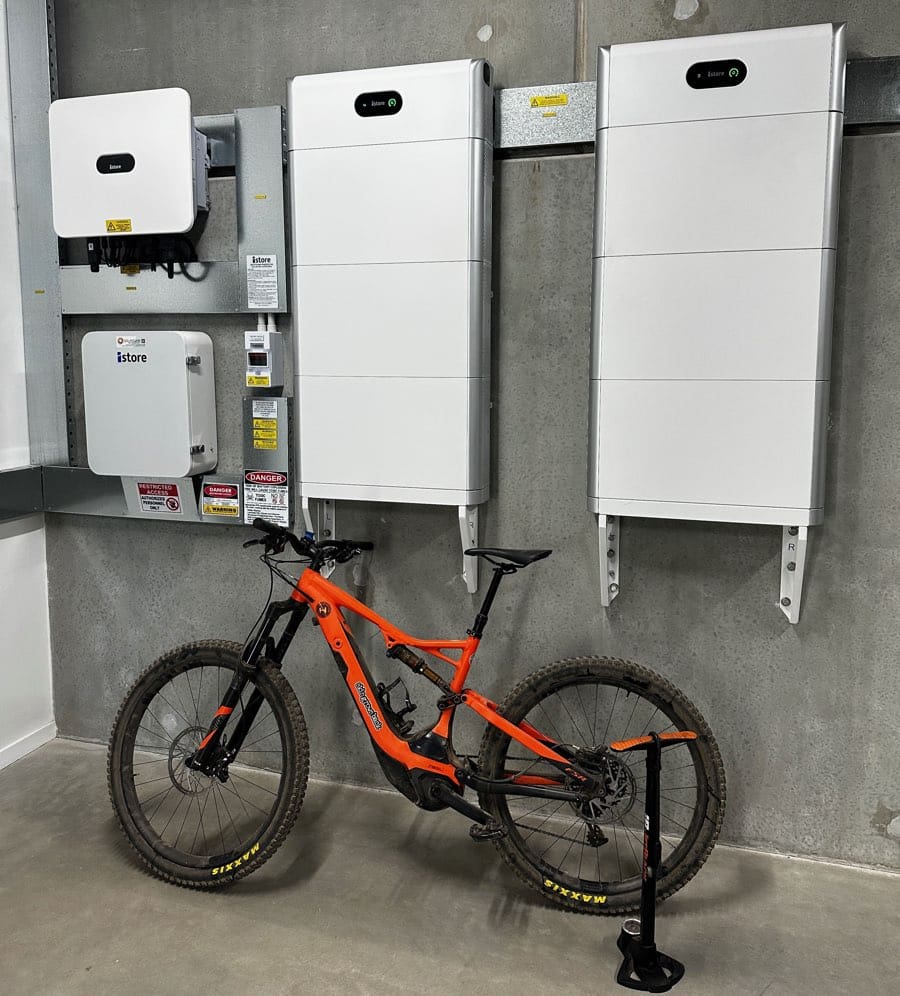
A beautifully installed, well-supported, mid-range system on my shed.
The good news? Plenty of Australians are smart enough to value that. The bad news? Too many are still getting sucked into a brand vs. dollars quote frenzy, and the whole industry pays for it.
And if K-Mart ever starts selling solar systems next to the cheap mountain bikes, you’ll know we’ve hit rock bottom.
Phase Shift is a weekly opinion column by SolarQuotes founder Finn Peacock. Subscribe to SolarQuotes’ free newsletter to get it emailed to your inbox each week along with our other home electrification coverage.

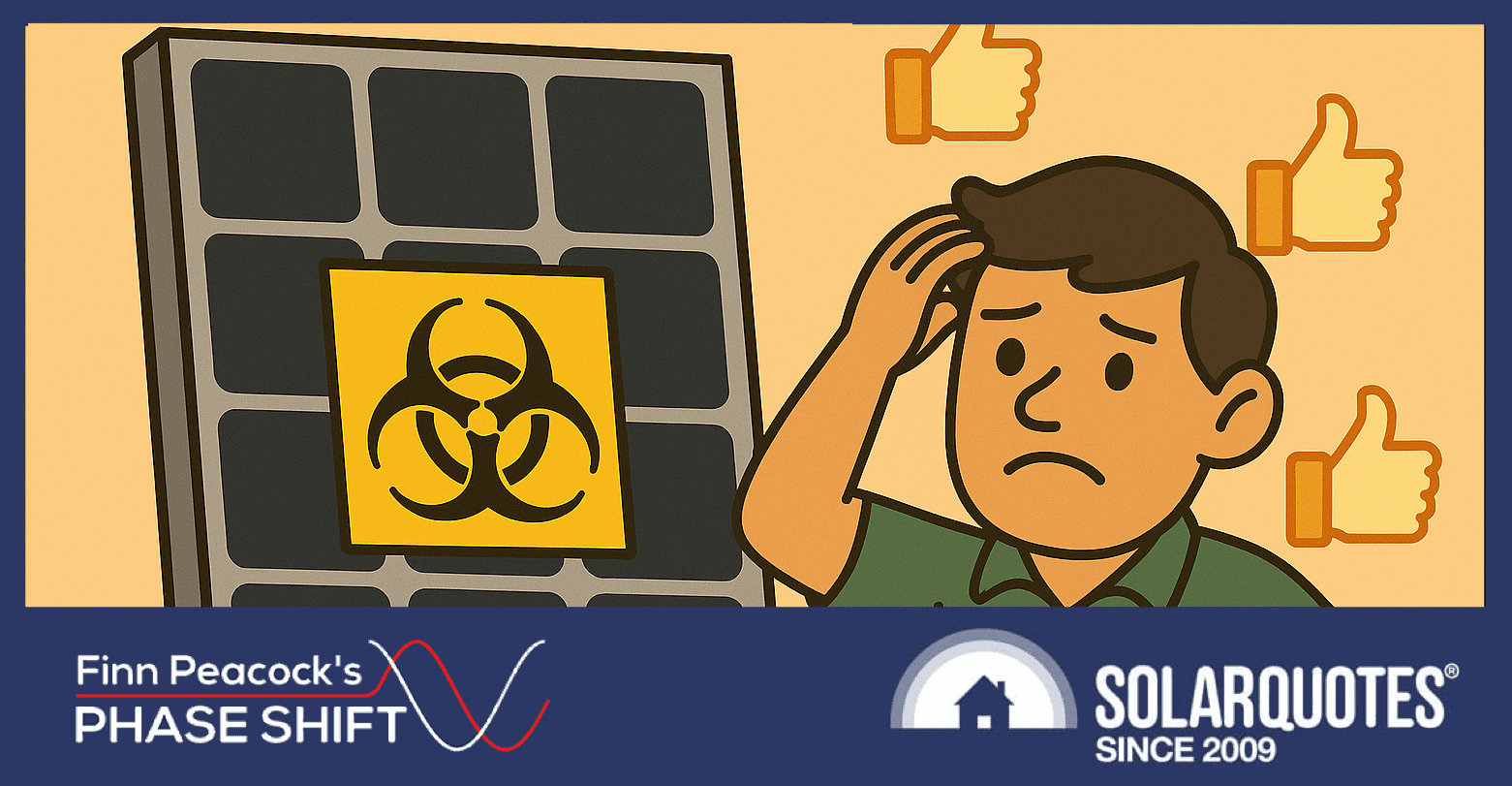
 RSS - Posts
RSS - Posts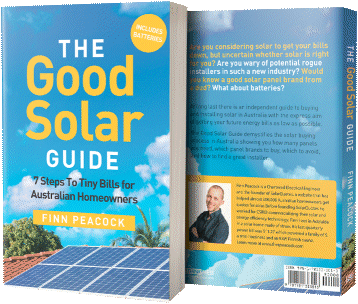


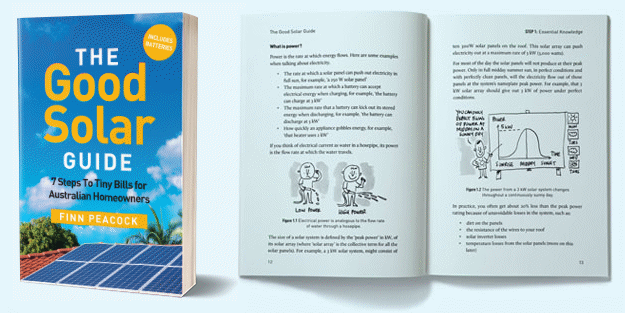
Which is why you need far more detailed quotes.
Otherwise there is no reason for the 4 grand higher price apart from the bigger inverter, (which i highly doubt will cost 4 grand more than the 5kw unit). So – unless they are trying to rip you off, the difference will be in the layout, locations and install itself.
If those details are not included you cant ask the relevant questions.
When i had my solar installed i did not go with the lowest quote, I went with the company that made me feel most comfortable when explaining what they were going to do, and of course, their terms and conditions – one company that quoted me basically wanted 100% of the price up front before they put a foot on my roof – that quote went straight in the bin without even looking at it any further. The company I did chose was about $1500 dearer than the lowest quote, but i consider it money well spent.
The My Efficient Electric Home FB group I think is the one that kicked me off for refusing to agree that a split system air conditioner runs more efficiently if you let your house get to a freezing temperature overnight, because that way the temperature differential between input and output to the system is minimised in the COP equations. Forgetting that if inside is warm the desired set point temperature is only minimally higher than the current temperature inside, requiring much less heat to be drawn from outside air by the heat pump.
Anyway, haven’t missed the place. Love that SQ has people with actual brains and experience behind it.